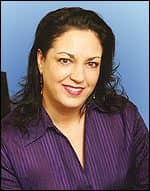 |
It’s AAMI time again! The Association for the Advancement of Medical Instrumentation will hold its annual conference & expo in San Jose, Calif, May 31 through June 2. It is a time of gathering—new ideas and knowledge—and a chance to network with colleagues, make new friends, explore the latest technologies, and get an expanded view of the industry and its future.
At the show, attendees can choose from classes under various headings such as business and management, patient safety, and technical operations and support. New this year are courses on “The Big Picture,” which will feature topics about how to improve your hospital’s environmental impact and risk management. In addition to an abundance of classes, speakers, roundtable discussions, luncheons, and exhibits round out the program.
If you’re attending the show, you will have the opportunity to participate—something I’ve been hearing lately has been on the wane. Some biomed association leaders have recently told me that they haven’t had meetings because they’re practically the only ones pulling it all together. I have personally felt the frustration when I try to find biomeds to participate in articles, which can’t be written without the expertise of those in the industry.
So, why the hesitation? For meetings, I’ve heard some say that it’s too much trouble after work to go to a meeting, or, if a large metropolitan area has only one association, the drive may be too far. On the article side, I’ve heard a few reasons. Louis W. Schonder, CBET, treasurer and Webmaster of the Philadelphia Area Medical Instrumentation Association, and director, earthMed (www.earthMed.org, an all-volunteer nonprofit organization that offers diagnostic support and medical device donations), echoes the opinion of what other biomeds have told me, saying, “The biomed field is so diverse that nobody ‘has all of the answers,’ and some are confident enough to admit that.” He adds that ironically, the ones perceived as having the answers are more publicly visible because they are “exchanging answers,” knowing that is how they can really become more knowledgeable.
Whatever your reason may be, I hope you’ll give some thought to strengthening your profession by participating in local and national associations, and by sharing your expertise with this magazine. To those clinical engineers and BMETs who have written columns and have been interviewed for our articles, and to my wonderful editorial advisory board, I am grateful to each of you for your contributions. 24×7 thrives because of your willingness to share your knowledge, and taking the time to participate and exchange answers will make your profession stronger and more visible.
I hope you’ll stop by and see us at AAMI—booth 1024—and share your ideas and suggestions.
Julie Kirst



